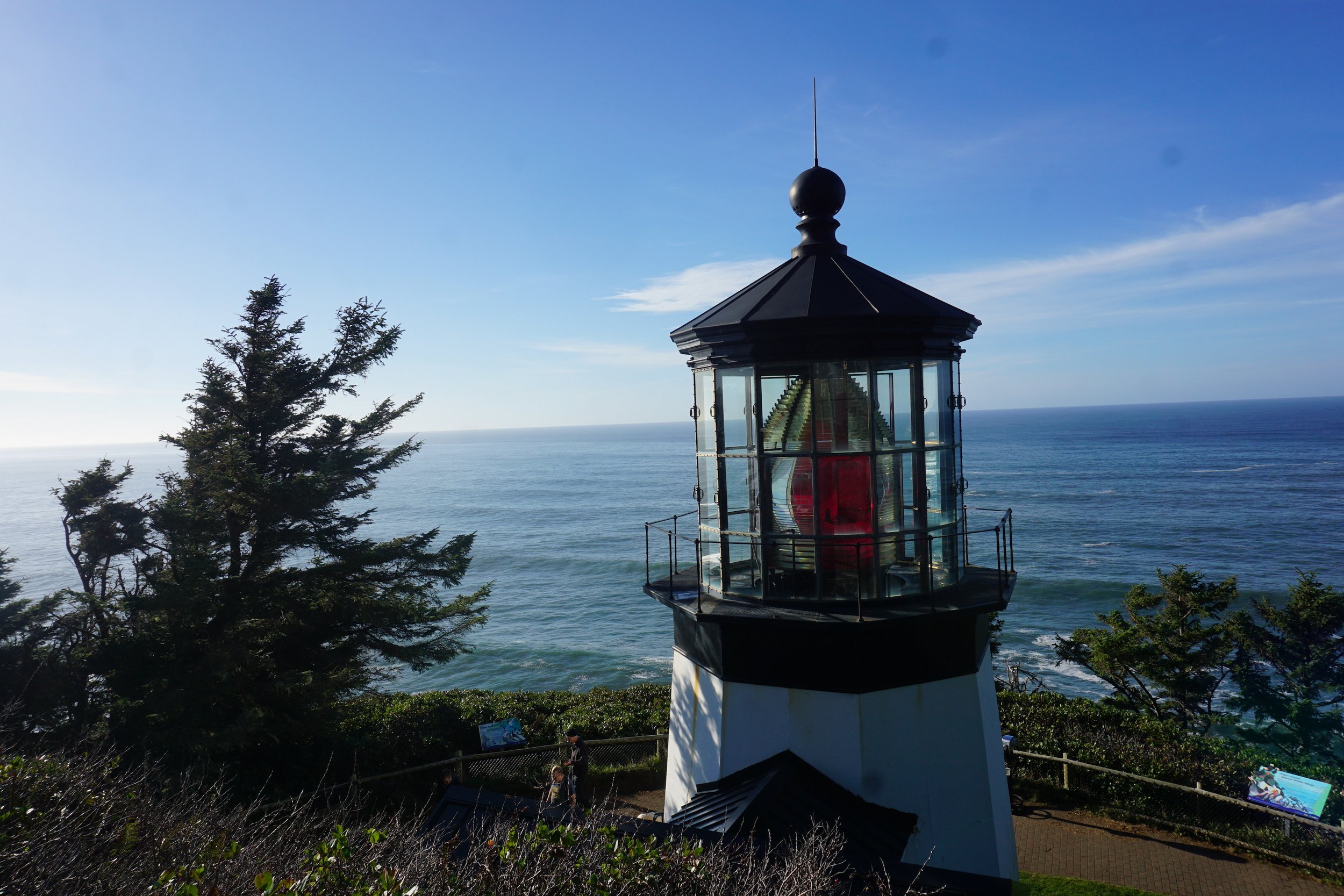Take a shine to Cape Meares





By Michael Edwards
For the TODAY
Just a few miles west of Tillamook, the Cape Meares State Scenic Viewpoint and National Wildlife Refuge provides visitors with access to Oregon’s maritime history, nesting seabirds and temperate rainforest. The centerpiece of this compact jewel of the Oregon State Parks system is the Cape Meares Lighthouse.
In 1886, the acceleration of trade between San Francisco Bay and Puget Sound coaxed congress into allocating $60,000 for the construction of a lighthouse atop the Cape Meares headland.
The beacon was to provide mariners with a waypoint along the unlit coast and a warning to sailors navigating the treacherous entrance into Tillamook Bay.
The lighthouse’s powerful Frensel lens was built in 1887 by Henry LePaute of Paris and was shipped around the tip of South America to Oregon.
According to Oregon State Parks Ranger Travis Korbe, to hoist the heavy lenses 217 feet from the sea to the headland, “MacGyver-like” builders constructed a crane from locally cut timbers. The tower’s bricks were fired onsite and the structure’s steel was forged in Portland. On New Year's night 1890, the oil-fueled lighthouse’s 18,000-candlepower primary lens and 160,000-candlepower red bullseye lens began a 74-year life illuminating the Pacific night.
Lize Zimmerman, coordinator of the Friends of the Cape Meares Lighthouse, said that the lighthouse’s identifying signature was its 30-second fixed white light shining from the primary lens, followed by a red flash of five seconds from the bullseye lens, once every minute.
Among Oregon’s lighthouses, Cape Meares’s 38-foot tower is the shortest. Zimmerman said that because of the curvature of the earth and the fact that the headland is perched so high above the ocean, constructing a tower similar in size to the 93-foot Yaquina Head Lighthouse would distort the beam, thus negating the light’s effectiveness.
Though lighthouse tours are not being led at this time, seeing the structure up close and experiencing the refuge’s bonanza of natural wonders makes a visit to Cape Meares worthwhile.
A stone’s throw from the main kiosk, along a wheelchair-accessible path, the Octopus Tree stretches out its tentacle-like branches. Although it is not unusual to see a Sitka spruce with two trunks, this “culturally altered” spruce lacks a trunk.
Not far from the Octopus Tree is the state’s largest Sitka spruce, aptly named the Big Spruce. Like many of the trees that grow on exposed headlands and peek above their neighbors, this more than 700-year-old giant was decapitated in a windstorm. Despite losing its crown, the behemoth has not only maintained its structural integrity and fended off fungal infestations, but also continues to grow new branches.
Spring visitors to the refuge may witness a rocket-like streak plummeting from the sky towards the sea. Reaching speeds of 150 miles per hour in a dive, its prey, the pigeon guillemot, never sees or hears its assassin, the peregrine falcon, coming. The falcon stuns its prey with its strong legs and talons and, while still airborne, severs the sea bird's spinal cord with its powerful beak. Though it seems counterintuitive, especially to the poor guillemont, Ranger Korbe said that falcons have a net positive impact on seabird rookeries.
Unlike the precision hunting of the falcon, the larger, slower-flying eagles terrify murres into abandoning their colorful pear-shaped eggs and chicks on the rocks. When the murres fly off, opportunistic gulls, ravens, crows and turkey vultures land and decimate the rookeries. However, when the falcons are airborne, they harass the eagles. Harassed eagles spend an exorbitant amount of time shooing away their faster, more nimble, cousins and therefore less time scaring off anxious murres.
Throughout the beautifully kept grounds of the refuge, colorful kiosks explain the ecological connections that tie the park’s animals and their environment together. One explains that there are three types of cormorants. Give your child binoculars and a bird identification book and see if they can identify whether the seabird in their sites is the pelagic, Brant’s or a double-breasted type of these large, black, long-necked sea birds that frequent the Oregon Coast.
Because of the park's beauty and accessibility, between June and September more than 50,000 vehicles entered the refuge. With so many visitors, maintaining access while simultaneously protecting the natural and historical features of the refuge is challenging and requires the support of visitors.
Since the Cape Meares Lighthouse was decommissioned by the Coast Guard in 1963, Tillamook County residents have advocated for its preservation. Although the state funds park operations, Zimmerman said that funding the repair of the lighthouse’s 131-year-old Frensel lens will require resources from community partners and citizens.
If you are interested in contributing to the lighthouse’s maintenance and restoration, email Zimmerman at FriendsOfCapeMearesLighthouse@gmail.com or send a letter to PO Box 262, Netarts, Oregon 97143.
For more information, go to friendsofcapemeareslighthouse.com.
